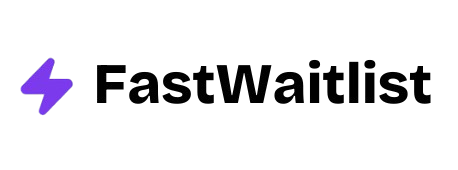
Introduction
Software developers are stepping away from traditional tech jobs to build their own products. You might have noticed more solo founders launching successful apps and tools lately. This shift makes sense: creating your own software lets you work on projects you care about while building a sustainable business.
Building software on your own might seem overwhelming at first. That's why we created this indie dev guide to help you understand the basics. You'll learn about choosing the right project, managing your time, and turning your coding skills into a profitable business. Whether you're a developer looking to start your first project or an entrepreneur interested in the technical side, we'll cover what you need to know to succeed as an independent developer.
What Is Indie Development
Indie development puts you in complete control of your software project. As an independent developer, you create and launch products without the backing of large companies or external investors. You're responsible for every aspect, from coding to marketing, giving you the freedom to build exactly what you want.
Building software independently differs significantly from traditional development. While big companies often have specialized teams for each task, you'll wear multiple hats as an indie developer. Your projects typically start smaller and grow based on real user feedback rather than corporate roadmaps. This approach lets you move quickly and adapt to what your users actually need, instead of following lengthy approval processes.
The indie development scene in 2025 is thriving with new opportunities. More developers are choosing this path thanks to better development tools and direct access to global markets. If you're looking for indie dev tips, focus on building minimum viable products first. The most successful indie developers now concentrate on solving specific problems for well-defined audiences rather than trying to compete with large-scale applications. This targeted approach helps you find your first users faster and build a sustainable business around your software.
Benefits of Going Independent
Building your own software gives you complete control over your creative vision. You can make decisions quickly without getting approval from higher-ups or following corporate guidelines. This freedom lets you build exactly what you believe your users need, turning your unique ideas into reality.
The financial side of independent development can be very rewarding. Since you control everything from pricing to marketing, you can build a sustainable business model that works for you. You get to keep more of what you earn and can adjust your strategy based on what works best for your product and market.
Here are the key advantages of being an independent developer:
- Full Creative Control: You choose the features, design, and direction of your product without compromise
- Direct User Relationships: You can talk directly with your users and quickly act on their feedback
- Flexible Schedule: You set your own hours and work when you're most productive
- Higher Profit Potential: No middle-men means you keep more of what you earn
- Quick Decision Making: You can pivot or update your product whenever needed
- Personal Growth: You learn multiple skills as you handle different aspects of the business
Essential Skills Required
Building a successful indie project requires more than just coding skills. You'll need a mix of technical knowledge and business understanding to turn your idea into reality.
Your technical foundation should include programming basics and the ability to solve problems systematically. But equally important are soft skills like communication and time management. These help you work efficiently and stay motivated during challenging development phases.
Business knowledge plays a crucial role in your success. Understanding your market, pricing strategies, and basic accounting principles will help you make better decisions about your product's features and growth.
Here are the critical skills you'll need:
- Programming: At least one programming language and basic software architecture
- Design Thinking: User interface design and user experience principles
- Project Management: Task organization and timeline planning
- Marketing Basics: Social media, content creation, and community building
- Financial Planning: Budgeting, pricing strategies, and revenue forecasting
Before investing months into development, test your idea's potential. Using platforms like FastWaitlist helps you gather early feedback and validate market interest. This simple step can save you time and resources by confirming demand for your solution.

Development Process Overview
Building software as an indie developer follows a flexible path that you can adjust to your needs. You'll find that successful indie projects rarely stick to rigid frameworks, instead choosing to adapt their process as they learn and grow.
1. Ideation
Create your initial concept and write down your core features. Think about what problem you're solving and who needs your solution.
2. Validation
Test your idea with potential users. Get feedback early through conversations, surveys, or simple prototypes.
3. Planning
Break down your project into small, manageable tasks. Set realistic timelines and decide which features to build first.
4. Development
Start building your minimum viable product (MVP). Focus on creating the essential features that solve your users' main problems.
5. Testing
Check your work regularly. Find bugs, improve user experience, and make sure everything works as intended.
6. Launch
Release your product to users. Start small with a beta version to gather more feedback and catch any issues.
7. Maintenance
Keep improving your product based on user feedback. Fix bugs and add features that users actually want.
The beauty of indie development lies in its flexibility. Many successful indie game design projects use shorter development cycles, letting you test ideas quickly and change direction when needed. You can release updates more frequently and build features based on real user feedback, making your product better with each iteration.
Resource Management
Managing your resources as an indie developer means making smart choices about your time and money. You'll need to balance development work with marketing, customer support, and business operations. The key is to focus on what brings the most value to your product and customers.
Your time is your most valuable asset. Start by blocking out specific hours for coding, marketing, and administrative tasks. Consider using the Pomodoro Technique to maintain focus and prevent burnout. Schedule regular breaks and don't forget to set aside time for learning new skills that will help your project grow. Protect your productive hours by minimizing distractions and scheduling meetings during your less productive times.
Choosing the right tools can save you both time and money. Look for free or low-cost alternatives when you're starting out. Many popular development tools offer free tiers for indie developers. Consider using GitHub for version control, Trello for project management, or Notion for documentation. As your project grows, you can upgrade to paid versions that offer more features. Remember that investing in tools that automate repetitive tasks often pays off in the long run.
Marketing Strategies
Building your presence before launch sets the foundation for your indie product's success. You need to start creating buzz while your product is still in development. Share your building process, post regular updates about features, and gather feedback from potential users. This helps you validate your ideas and build excitement around your solution.
Community building becomes your secret weapon as an indie developer. Start a blog or newsletter where you share your expertise and insights about the problem you're solving. Join relevant communities on Reddit, Discord, or Slack where your target users hang out. Be helpful, share your knowledge, and build genuine connections without pushing your product too hard.
Social media and content marketing work together to spread your message. Pick one or two social platforms where your audience spends time and post consistently. Create valuable content that helps solve your audience's problems. Write blog posts, make videos, or start a podcast focusing on topics related to your product's niche. Quality beats quantity every time.
A waitlist builds anticipation and helps you measure interest in your product. Using tools like FastWaitlist lets you create a professional signup page quickly. Offer early access or special perks to encourage signups. Keep your waitlist engaged with regular updates about your progress and launch timeline. This creates a group of excited users ready to try your product as soon as it launches.
Funding Options
Starting your indie project requires careful financial planning. Building your product with your own money gives you complete control over decisions and keeps you focused on what matters most to your customers. You can work at your own pace and maintain full ownership of your creation.
Crowdfunding has become a popular choice for indie developers. Platforms like Kickstarter and Indiegogo let you showcase your idea to potential backers while building an early community around your product. Your backers often become your first users and most vocal supporters, providing valuable feedback during development.
Here are your main funding sources:
- Personal Savings: Using your own money means full control and no outside pressure
- Crowdfunding: Getting support from future users while validating your idea
- Angel Investors: Individual investors who provide funding in exchange for equity
- Early Access Sales: Selling your product before its full release to fund development
Risk Management
Starting an indie project involves several risks that could affect your success. Financial uncertainty is often the biggest concern, especially when you're investing your own money into development. You might face technical challenges that take longer to solve than expected, or market conditions could change while you're building your product.
Managing these risks starts with smart planning. Set aside enough savings to cover your living expenses for at least six months beyond your expected development time. Break down your project into smaller milestones so you can test your assumptions early. Consider working part-time or taking on consulting work to maintain a steady income stream while developing your product.
Having backup plans ready will help you adapt when things don't go as expected. If your initial product idea isn't gaining traction, be ready to pivot based on user feedback. You could simplify your product's features, target a different market segment, or even use your newly developed skills to pursue consulting opportunities. Remember that many successful products started as something completely different from their original concept.

Tools and Technologies
You'll need reliable tools to build your indie game efficiently. The right combination of development and management tools will help you stay organized and productive throughout your project.
The core indie game tools you should consider include code editors, version control systems, and debugging software. These fundamentals will form the backbone of your development process, letting you write clean code and track changes effectively. Most of these tools offer free versions that work well for indie projects.
Project management tools help you track tasks, set milestones, and manage your development timeline. You can use simple task boards or more comprehensive project management software depending on your team size and needs. The key is picking tools that don't get in your way while keeping everything organized.
Here are the essential tools to consider:
-
Development Frameworks and Indie Game Engines:
- Unity for 2D and 3D games
- Unreal Engine for high-end graphics
- Godot for open-source development
-
Design Tools:
-
Testing Platforms:
- Steam for PC distribution
- itch.io for indie game hosting
- TestFlight for iOS testing
Legal Considerations
Starting your indie development business requires proper legal setup to protect your work and interests. You'll need to register your business with local authorities, which typically involves choosing a business structure like LLC or sole proprietorship. Your choice will affect your taxes and personal liability, so consider consulting with a tax professional to make the best decision for your situation.
Your intellectual property needs strong protection from the start. Copyright automatically applies to your code and creative work, but you should still document your development process and maintain clear records. Consider registering trademarks for your product names and logos with the USPTO. This gives you exclusive rights to use these elements and helps prevent others from copying your brand identity.
Software licensing and contracts form the foundation of your business relationships. You need clear terms of service and privacy policies for your products. If you're using open-source components, make sure you understand and comply with their license requirements. When working with contractors or hiring employees, use written agreements that clearly outline ownership of work, payment terms, and confidentiality expectations. These documents help prevent future disputes and protect your business interests.
FAQ
How much money do I need to start indie development?
You can start indie development with very little money. The basic requirements are a computer you already own and an internet connection. Your main investment will be your time. As your project grows, you might need to spend money on tools, hosting, or marketing, but you can start small and scale up as needed.
How long does it take to create an indie product?
The timeline varies greatly depending on your product's complexity and your available time. A simple product might take 2 to 3 months, while more complex ones can take a year or longer. The key is starting with a minimum viable product and improving it based on user feedback.
Do I need to know programming to be an indie developer?
No, you don't need to be a programmer to create indie products. Many no-code tools like Webflow, Bubble, and Zapier let you build functional products without coding. However, learning basic programming concepts can help you understand what's possible with your product.
Can I do indie development part-time?
Yes, many successful indie developers start part-time while keeping their day jobs. Working on your product during evenings and weekends is a smart way to reduce risk. Just make sure to set realistic goals and maintain a consistent schedule that works for you.
How do I know if my product idea is viable?
The best way to validate your idea is to talk to potential customers and create a waiting list before building anything. Tools like FastWaitlist help you gauge real market interest by collecting signups from interested users. This approach saves you time and resources by confirming demand before you invest heavily in development. With FastWaitlist, you can quickly set up a landing page, gather feedback, and understand what features your future customers want most.
